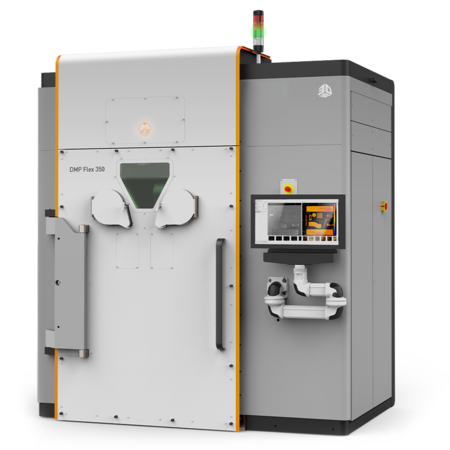3D Systems and EIT transform surgical implants with unique and innovative custom 3D metal prints for greater surgical success and reduced patient recovery times
From preoperative planning to patient education to surgical guide production, 3D printing for medical applications is on the rise as physicians and researchers are increasingly taking advantage of the technology’s endless flexibility. A new generation of metal 3D printing technology along with biocompatible metals are adding yet another layer of possibilities, allowing medical implant companies to 3D print patient-specific implants for immediate use in a fraction of the time of traditional methods.
German medical device manufacturer Emerging Implant Technologies (EIT), the first European orthopedic implant maker to focus solely on manufacturing with 3D printing, recently demonstrated the vast potential of medical additive manufacturing by supplying the first anatomically adapted, 3D-printed titanium fusion implant to a patient with a degenerative cervical spine condition. The technology behind this pioneering effort was 3D Systems’ Direct Metal Printing (DMP) technology, which is capable of building metal objects layer by layer in a variety of metals, in this case biocompatible titanium.
Designed in partnership with 3D Systems and produced using its cloud-based manufacturing services, the porous EIT cervical implant imitates the structure and characteristics of natural trabecular bone, say the developers, allowing the surrounding structures to fuse with it more easily and significantly accelerating the healing process. This sophisticated medical device—with its precise micro-, macro- and nano-structural components—demonstrates the power and potential of infinitely complex 3D printed parts and the incredible accuracy of DMP technology.
The capabilities of DMP, and medical applications like EIT’s, are already capturing the medical community’s attention. “We are fascinated by the possibilities of this new technology combining modern computer-aided design and custom-made manufacturing of a high-tech cervical implant,” said Professor Uwe Spetzger, the surgeon who performed the surgery, and the chairman of the neurosurgery department at Klinikum Karlsruhe, in a press release. “The future of patient individualized spinal implants has begun.”
Typically, a cervical implant procedure requires bone grafts as well as stock metal implants and comes with a range of undesired outcomes, like implant migration and breakage. As a result, many patients require subsequent operations before the implant can be secured. EIT’s implant, on the other hand, nullifies the need for bone grafts and, with its bone-like structure, provides enhanced bone-implant contact and fusion. At the same time, using patient-specific imaging data and 3D printing, EIT is able to provide implants that fit perfectly with the patient’s anatomy and produce those implants faster and more economically than traditional methods. These custom-fit implants reduce the chance of migrating and actually encourage the bone-implant fusion that is so vital to the success of this procedure. For the patient, this all translates into less time under anesthesia because no bone grafts are required, a reduced risk of reoperation due to migrated implants and, potentially, a faster recovery.
Used increasingly in medical applications, as well as automotive, aerospace and manufacturing, Direct Metal 3D printers by 3D Systems create chemically pure, fully dense and highly accurate metal parts using patented laser melting technology. In addition to the biocompatible titanium used by EIT, DMP printers are compatible with over 20 materials, like Inconel, maraging steel and chromium cobalt.
As medical manufacturers shift toward personalized and highly complex implants and drill guides, the future is bright for 3D Systems’ Direct Metal 3D printing.
“Individualization will deliver better implants, faster and easier surgery, and better patient outcomes at a reasonable cost,” said Stephanie Eisen, CEO of EIT in a press release. “The reoperation rates in spine surgery are by far higher than, for example, with hip or knee implants. It is our mission to change this outcome statistic.”
